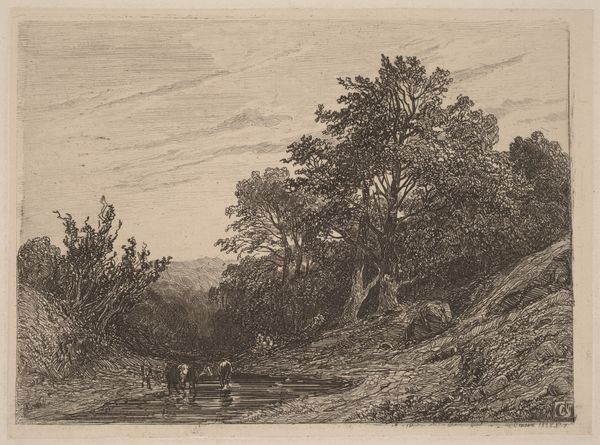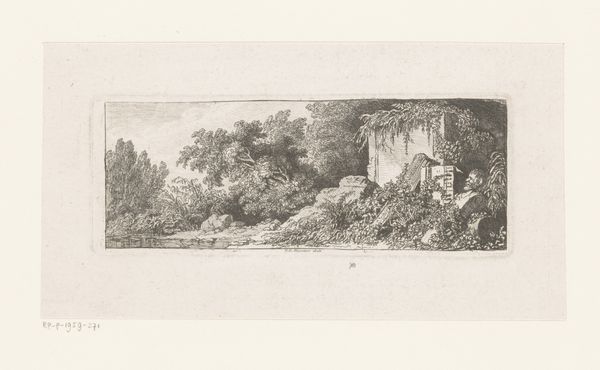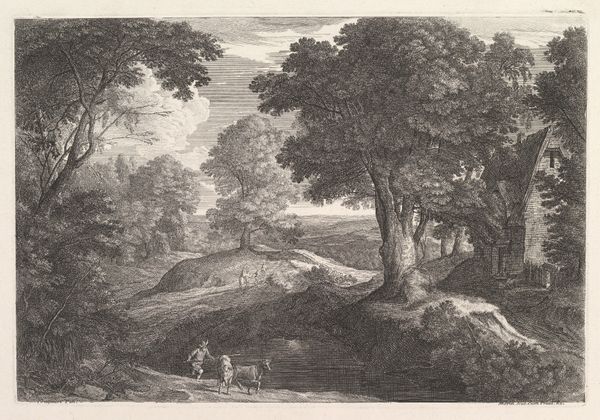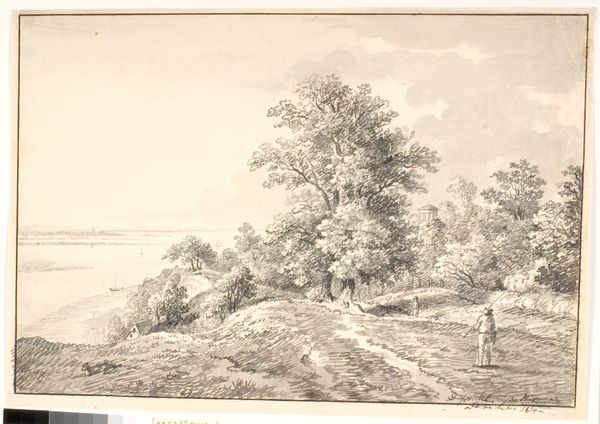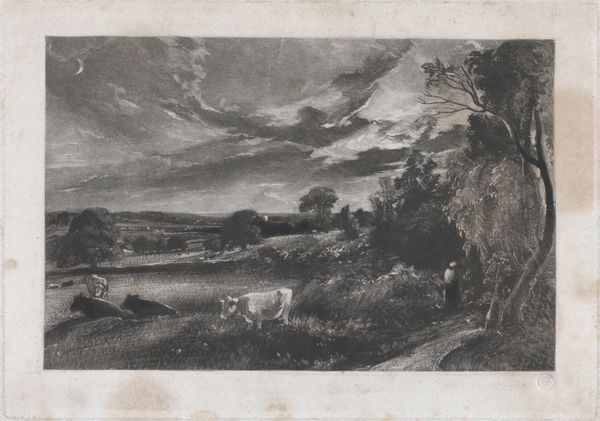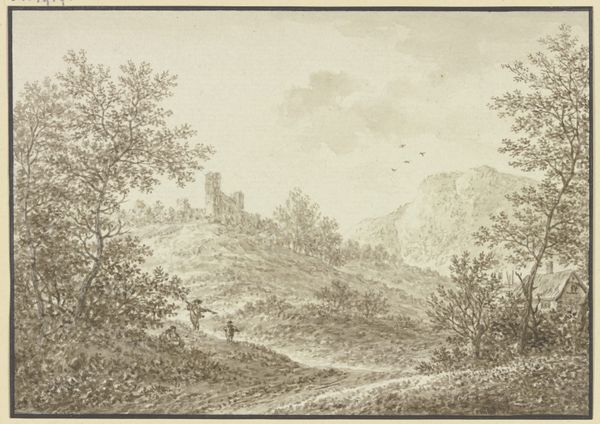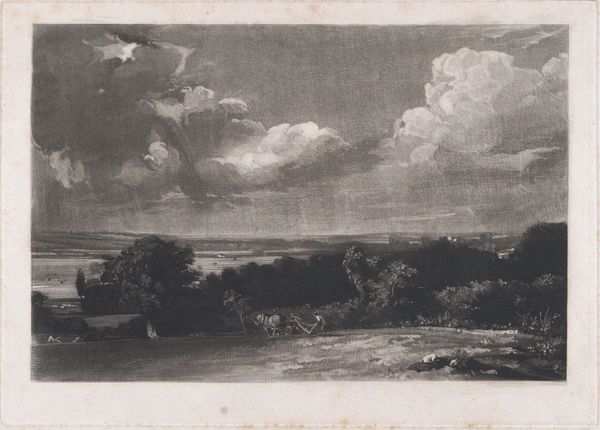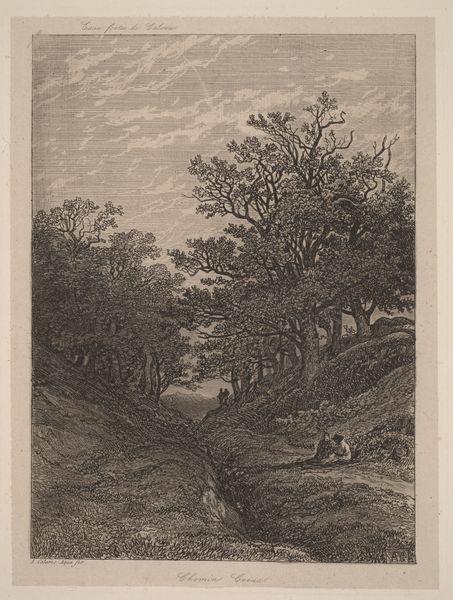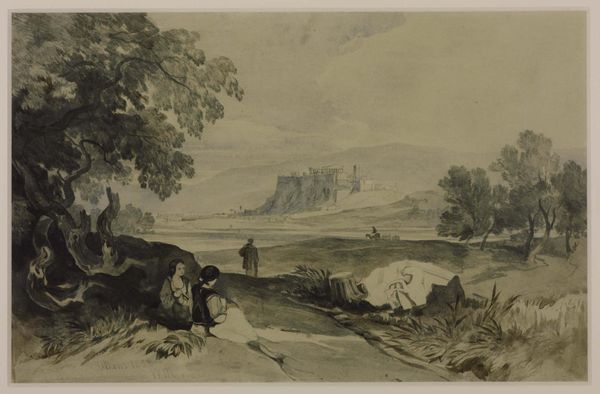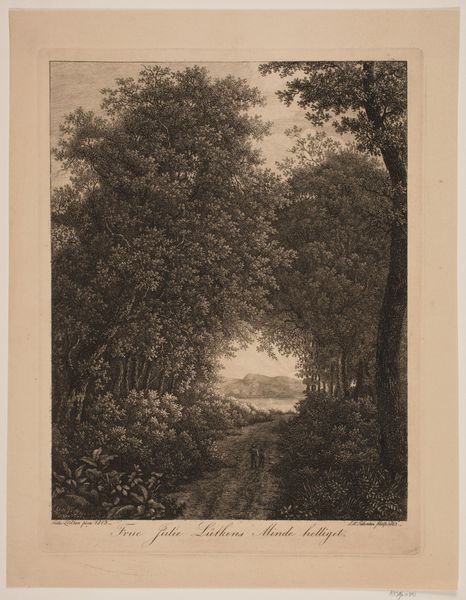
drawing, print, plein-air
#
drawing
# print
#
plein-air
#
landscape
#
figuration
#
romanticism
Dimensions: Sheet: 14 7/16 × 10 7/8 in. (36.7 × 27.6 cm) Plate: 7 13/16 × 6 7/16 in. (19.8 × 16.3 cm)
Copyright: Public Domain
Curator: We’re looking at Alexandre Calame’s “Landscape,” likely created sometime between 1830 and 1864. It's currently held here at the Met. Editor: It has this wonderful air of subdued romanticism, doesn’t it? Melancholic, almost. The density of the trees is beautifully offset by that clearing where two figures stand on the trail. Curator: Absolutely. Calame skillfully employs light and shadow to create depth, drawing the viewer's eye into the scene. The formal qualities of the work—the way he contrasts the textures of the leaves against the smoother background, and the stark tonal values, indicate a fascination with detail. Editor: I’m immediately curious about those figures. Are they a family escaping a rapidly industrializing urban center? The piece seems less about a picturesque landscape than it is a representation of socio-political refuge, the yearning for an untainted space as society shifted around it. Curator: That’s an interesting interpretation. From a purely formal perspective, though, their presence functions compositionally as a means to create a human scale within the grandeur of nature. It's a device he uses frequently to direct attention to the landscape’s overwhelming scale. Editor: Scale indeed! However, nature can symbolize resilience, escape from societal norms. Given that this emerged during a time of great social change across Europe, I view it as Calame using Romantic tropes to present nature as a form of subtle resistance, an idealized sanctuary outside human jurisdiction. Curator: It seems, looking at the medium being printmaking on paper, the use of dark and light, we may even draw attention to binary structures of knowledge—or knowing—within an almost hyperrealistic presentation of form. Editor: Indeed. What you see in pure form I recognize through history: an appreciation for how artistic interpretations inevitably intertwine with cultural shifts, allowing artworks to challenge assumptions about progress and the past. Curator: Ultimately, whether one examines the forms or focuses on socio-historical considerations, this “Landscape” prompts reflection on the relationship between humanity and nature.
Comments
No comments
Be the first to comment and join the conversation on the ultimate creative platform.
